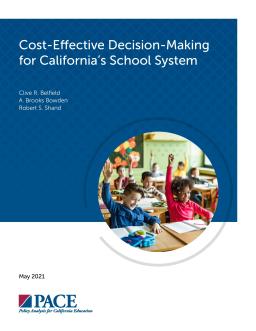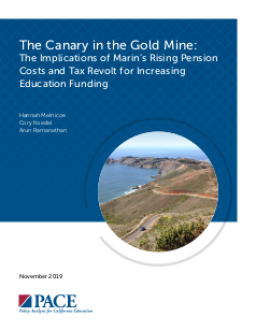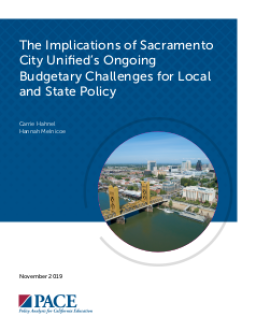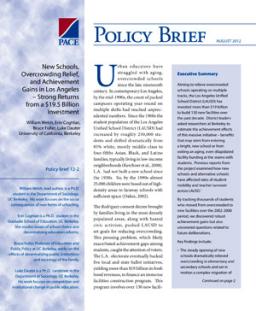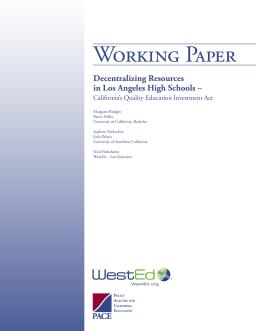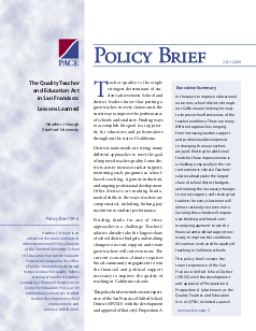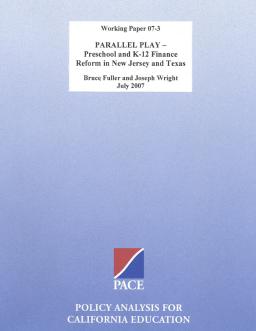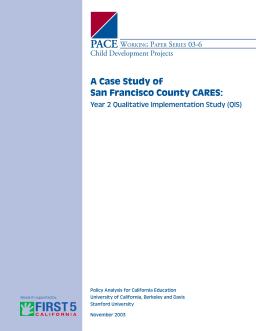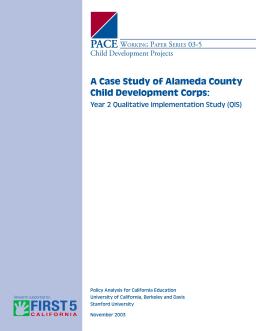Published
Summary
A report on the importance of economic analysis in decision-making in CA's school system. Economic evaluations can help identify the most effective policies and interventions while reducing waste and ultimately improving outcomes for students. Studied here is the cost-effectiveness analysis (CEA) method, its benefits, and its broad applicability. To be more influential, economic analysts should focus on policies and programs that require significant funding, investigate how results are relevant to decision-makers, and consider how resources can be allocated towards cost-effective programs.
The Implications of Marin’s Rising Pension Costs and Tax Revolt for Increasing Education Funding
Published
Summary
Marin County's schools face rising costs, particularly for pensions and declining enrollment, which is not sustainable. Teacher salaries and recruitment are affected, with limited public awareness of district flexibility to respond to rising pension costs. Parcel taxes have faced opposition, and a statewide funding solution is necessary to support student success and stop financial distress. Building awareness of pension costs' impact is essential, and benefits and salaries are necessary to retain teachers.
Published
Summary
This case study examines the looming deficit faced by Sacramento City Unified School District and the challenges it poses for students, including declining enrollment, increasing special education and pension costs. It also highlights the impact of SCUSD's budget practices and labor-management relations on its current budget situation. The report offers considerations for policymakers, including addressing unaffordable teacher benefits and increasing funding. Although the district's fiscal crisis cannot be solved overnight, stabilizing the situation and restoring public confidence are crucial.
Strong Returns from a $19.5 Billion Investment
Published
Summary
The LAUSD invested over $19B to build 130 new facilities to relieve overcrowded schools. A PACE policy brief analyzed its effects on student achievement and found robust gains for many elementary-school pupils who switched from old to new facilities. However, significant gains were limited to elementary school students and new high school facilities produced weak and inconsistent achievement gains. The report also tracked thousands of students who moved from overcrowded to new facilities over the 2002-2008 period.
California’s Quality Education Investment Act
Published
Summary
This working paper examines the use of Quality Education Investment Act (QEIA) funds, which allocated $2.6B over seven years to California's lowest-performing schools. The authors conducted a study of four Los Angeles high schools to investigate how QEIA dollars were spent in the first year, who made the decisions, and how funds were used to improve teaching and the instructional program. The study found that district officials and principals had discretion in allocating funds, consistent with recent efforts to deregulate categorical-aid programs and give local educators fiscal discretion.
Lessons Learned
Published
Summary
This policy brief examines the recent development and approval of Proposition A in the San Francisco Unified School District, which included a parcel tax for increasing teacher salaries, introducing flexibility to the salary schedule, and strengthening accountability for teacher performance. The author describes how the district and union worked together to increase compensation and align school district goals with teacher salaries.
The Quality Teacher and Education Act in San Francisco
Published
Summary
This policy report reviews the approval of Proposition A, a parcel tax initiative in the San Francisco Unified School District, which aimed to improve teacher salaries and fund innovative compensation programs. The report includes an assessment of the programs funded by the tax revenues, and is based on interviews and public documents.
Preschool and K–12 Finance Reform in New Jersey and Texas
Published
Summary
This working paper examines factors that affect student achievement in California schools, finding that family background and school context are important determinants. The report recommends that schools focus on providing high-quality instruction, improving reading and math skills, and creating a positive school climate. Policymakers should increase resources for under-resourced schools and promote parental involvement. Continued research is needed to better understand the complex factors that shape student outcomes.
Year 2 Qualitative Implementation Study (QIS)
Published
Summary
This paper assesses the perspectives and experiences of stakeholders on San Francisco County’s CARES program, a childcare retention–incentive program. Year 2 saw over a threefold increase in the number of stipends awarded, but recipients felt the program couldn't address ECE staff retention/turnover alone. Solutions need to be implemented within a larger system of support, raising public awareness, expanding professional development opportunities, and exerting pressure on policymakers for sustained funding to augment ECE staff salaries.
Year 2 Qualitative Implementation Study (QIS)
Published
Summary
This paper discusses the second year of Alameda County’s Child Development Corps program as a childcare retention-incentive program. The program's goals were to encourage staff training, professional development, and establish a strong network of ECE professionals. Stipend recipients were pleased with the program but recognized that it could not function alone in addressing staff retention, and a larger system of support and advocacy was necessary.
Published
Summary
A study conducted for the Los Angeles County Department of Public Social Services aimed to determine the supply and demand of licensed childcare in the county, with a focus on low-income communities and special types of care. The survey analyzed data at three levels: county-wide, service planning areas, and supervisorial districts. Results showed disparities in childcare supply across the county, with shortages in special types of care and little information on where childcare is needed.
